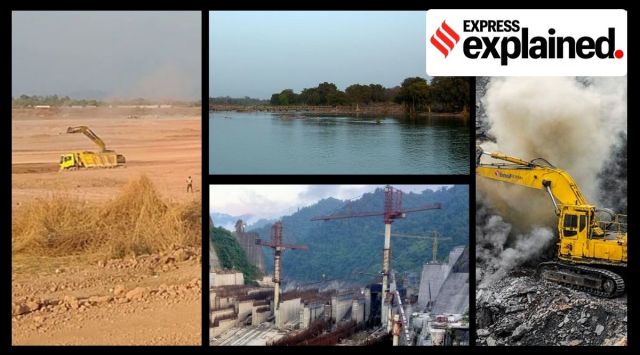Jay Mazoomdaar is an investigative reporter focused on offshore finance, equitable growth, natural resources management and biodiversity conservation. Over two decades, his work has been recognised by the International Press Institute, the Ramnath Goenka Foundation, the Commonwealth Press Union, the Prem Bhatia Memorial Trust, the Asian College of Journalism etc. Mazoomdaar’s major investigations include the extirpation of tigers in Sariska, global offshore probes such as Panama Papers, Robert Vadra’s land deals in Rajasthan, India’s dubious forest cover data, Vyapam deaths in Madhya Pradesh, mega projects flouting clearance conditions, Nitin Gadkari’s link to e-rickshaws, India shifting stand on ivory ban to fly in African cheetahs, the loss of indigenous cow breeds, the hydel rush in Arunachal Pradesh, land mafias inside Corbett, the JDY financial inclusion scheme, an iron ore heist in Odisha, highways expansion through the Kanha-Pench landscape etc. ... Read More
Ignoring green commitments: Weak political will, lack of a monitoring system
The Union Environment Ministry has less than 80 officials for field verification under green laws, who are expected to visit thousands of project sites at least once a year. At the same time, between 2014 and 2019 alone, the Ministry granted over 11,500 environment and forest clearances.
 From Ken Betwa link to new Goa airport and Odisha mine, 6 mega projects have ignored green commitments they made.
From Ken Betwa link to new Goa airport and Odisha mine, 6 mega projects have ignored green commitments they made.At the heart of what has gone wrong with mega projects on the Government’s sustainable development roadmap is the absence of an effective compliance mechanism.
One reason, officials admit, is the lack of trained manpower and resource limitations. The Union Environment Ministry has less than 80 officials for field verification under green laws, who are expected to visit thousands of project sites at least once a year. At the same time, between 2014 and 2019 alone, the Ministry granted over 11,500 environment and forest clearances.
In 2006, a report by the Organisation for Economic Co-operation and Development (OECD) blamed the “absence of strong political will” for significant funding limitations faced by all environmental institutions in India. Little has changed since.
Instead of strengthening the monitoring mechanism and applying effective punitive tools, successive governments have relied on amnesty (post-facto clearance), incentives (subsidies) or self-certification that helped cut non-compliance, if at all, mostly on paper.
As the rejection rate for forest clearance drops below one per cent and the Government decides to incentivise states for faster environmental clearance, this lack of political will gets reinforced by the lack of compliance even in mega projects.
More so, when the flagship projects were either rejected or questioned over their viability by various expert panels of the Government before their clearance in strategic interest was rationalised with substantial compensatory measures.
Consider the Ken-Betwa link project. Ever since it was proposed in the mid-90s, KBLP has been considered unviable by several experts for its immense environmental cost. In fact, the project was rejected in 2011, only to be revived with a techno-economic clearance in 2016.
In 2017, its forest clearance was made conditional on compensating for the diversion of 60.17 sq km forest land by adding an equal extent of revenue land to Panna tiger reserve. Though it is not in the Environment ministry’s power to modify a condition put by its expert panels, the Ministry of Jal Shakti and Madhya Pradesh government have been seeking relaxations repeatedly since 2018.
Or take the mega hydel projects in Arunachal Pradesh. For 17 years, both the Environment ministry and the state have been ignoring the most crucial condition imposed by the Supreme Court in 2004 for clearing the 2,000-MW Subansiri project.
If that is a case of purported oversight, the Ministry issued the final forest clearance to the twice-rejected 3,000-MW Dibang multipurpose project despite being made aware that Arunachal had not complied with the key precondition of declaring the catchment forests as a national park.
Similarly, multiple exceptions were made in granting clearances to Kulda coal mine in Orissa and Tamnar thermal plant in Chhattisgarh in “the national interest” even though the ministry and its expert panels were aware that the developers — Mahanadi Coalfields Limited and Jindal Power Limited — continued to transport coal through village roads.
And Goa, a state nearly 50 per cent behind in compensatory afforestation, was allowed an outlandish 10-for-1 plantation target on paper for the proposed international airport.
“Justifiable or not, projects in strategic sectors and areas will have their environmental cost,” said M C Mehta, environmentalist and Supreme Court lawyer. “But promising green remedies that neither the regulators or the developers are serious about goes against the Constitutional obligation towards the precautionary principles of sustainable development as well as public trust. This also sends the message that they have scant respect for legal commitments, including court orders.”
Newsletter | Click to get the day’s best explainers in your inbox
Photos



- 01
- 02
- 03
- 04
- 05




































